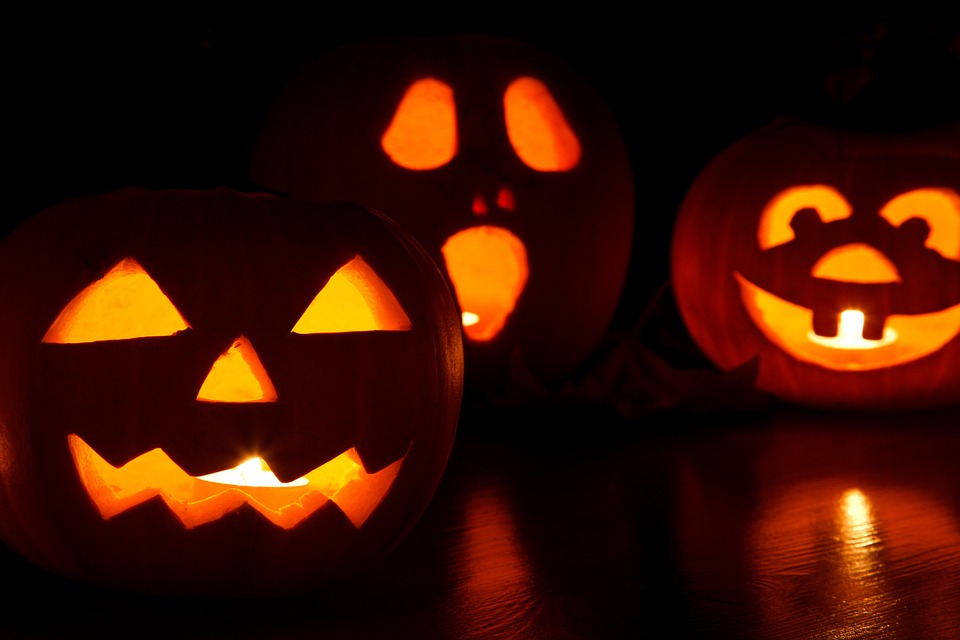Halloween + All Saints Day = Reformation Day?
Cute costumed kids begging for candy and eating hot dogs at the local fire station party—that’s the Halloween everyone likes to talk about. But is that the same Halloween of the scary slasher movies and the haunted attractions that pop up every October? Ghost stories and witches and pagan rituals always find their way into this holiday as well. What do they have to do with Halloween and how did religious holy days like All Saints Day and Reformation Day become attached to this time of year? If you find it confusing, you are not alone. These days have everything to do with life and death; just ask your ancestors.
Many of these feasts and festivals have withstood the test of time while some have changed to reflect social changes of the times. How we live and celebrate them reflect who we worship and what we think about our relationship with our God. You don’t even have to research that one—just look around your neighborhood and community; cultural diversity abounds and it is all rooted in each belief system. And so it was with the ancient Celts and Halloween. Pre-Christian Celts celebrated seasonal change, their principal festival, occurring November first, marking the end of harvest and the beginning of winter. It was believed that spirits from the Otherworld, home of the deities and the dead, could cross into the physical realm more easily at this time, which necessitated lighting bonfires for protection as well as feasts, sacrifices, and rituals to appease Samhain, the lord of death and evil spirits. People would also dress in costume as a disguise and recite verses in exchange for food (Wikipedia.com) This was not an innocuous festival but one fraught with the supernatural, superstition, and death.
 All Saints’ Day has its roots in honoring Christians martyred at the hands of the Roman Empire. The early church had set aside special days during the year to honor individual martyrs. When the number of martyred saints had exceeded calendar days, one day was set aside to honor all martyred saints, May 13 which became known as All Saint’s Day. Pope Gregory III later changed the date to November first, and, over time, all believers, known and unknown, were included. This day is the day “that Catholics remember those who have already entered heaven. All Souls’ Day is a day to pray for all loved ones who have died. In particular…the souls of those caught in purgatory, undergoing a process of purification before entering heaven.” (huffingtonpost.com)
All Saints’ Day has its roots in honoring Christians martyred at the hands of the Roman Empire. The early church had set aside special days during the year to honor individual martyrs. When the number of martyred saints had exceeded calendar days, one day was set aside to honor all martyred saints, May 13 which became known as All Saint’s Day. Pope Gregory III later changed the date to November first, and, over time, all believers, known and unknown, were included. This day is the day “that Catholics remember those who have already entered heaven. All Souls’ Day is a day to pray for all loved ones who have died. In particular…the souls of those caught in purgatory, undergoing a process of purification before entering heaven.” (huffingtonpost.com)
Herein lay the rub for one Roman Catholic monk named Martin Luther. He studied the Bible and theology in original languages. What he found shocked him and came to rock not only his world but the world of all who followed: the Roman Catholic Church did not teach the truth. Luther rediscovered “the doctrine of justification—that is, salvation by grace alone (Gal.2:21) through faith alone in Christ alone.” (Christianity.com) This discovery called into question the church’s teachings on salvation by good works, purgatory, merit, and, especially, the sale of indulgences. His 95 Theses list his complaints against the church concerning the sale of indulgences in order to raise money, solely for the benefit of the church. This addresses the purpose of All Saints’ Day and All Souls’ Day. Remembering and honoring the martyred as well as all believing people is commendable and helpful to the living but teaching people that they could buy favor with God with the purpose of releasing loved ones from purgatory is another matter entirely. What man on earth has that kind of authority? What kind of God offers salvation freely by sacrificing his own son then adds a surcharge? Luther’s arguments sparked a conversation that has lasted over 500 years, drawing people back to the Bible to find the answers to these questions and more. So, this harvest season, what are you celebrating?
Photo Credit: pixabay.com and andibreit@pixabay

